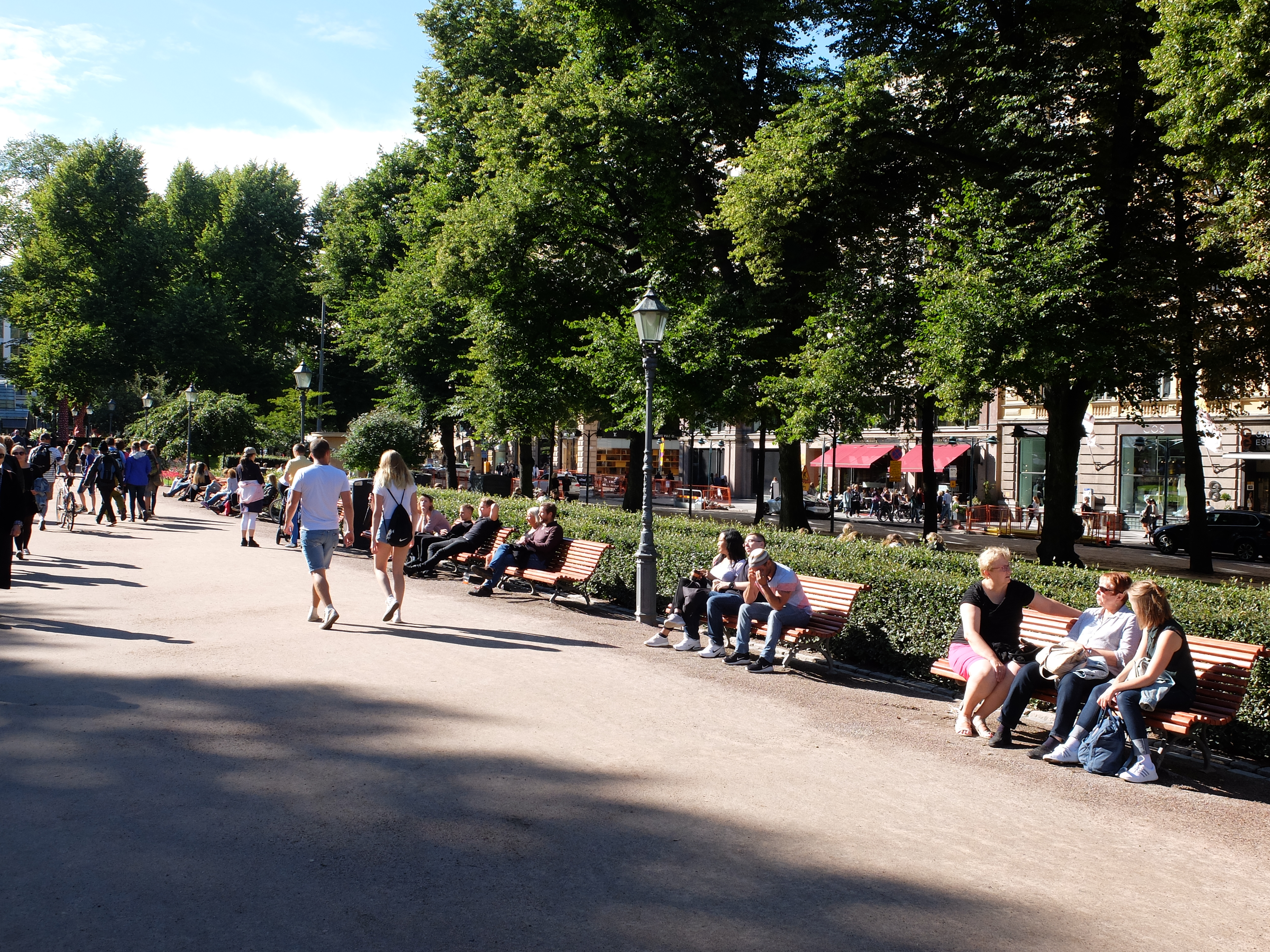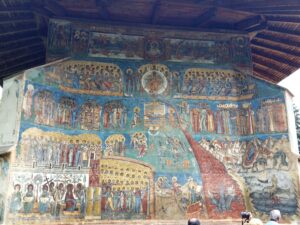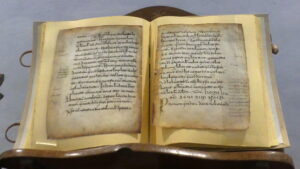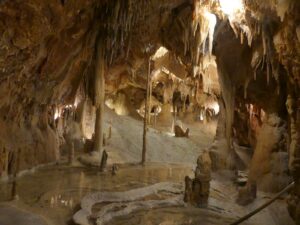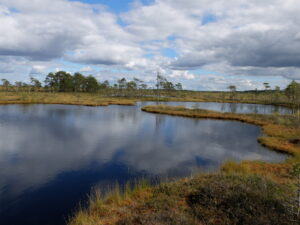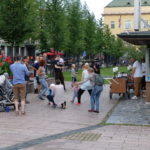
The Finns themselves say that they can seem cold, aloof to visitors. In public, for example, their custom is to stay in their own groups. At a restaurant or the very popular buffet lunches (lounas), where seating tends to be at larger tables, they typically avoid sharing, no matter how crowded a place is.
But that reserve is just a cultural habit. Once the ice is broken and a conversation breaks out, even with a stranger, they are warm, welcoming and happy to talk about any topic.
We experienced this one evening in Oulu, at a very pleasant outdoor deck where locals hung out for beer and other drinks, despite the extraordinarily high drink prices anywhere in the country. Taxes and salaries are high that even a pint of beer can often run 7 to 10 euro. We were at our own small table when a sunny patch in the afternoon turned suddenly rainy. Many people headed for the interior; we hustled over to a small table under a narrow awning…just about the same time that two men got there also. We mumbled and gestured to each other, each of us welcoming the other to share in the table’s protection from the blustery weather. It took a few minutes, but we were soon engaged in a vigorous and knowledgeable conversation about American and Finnish politics, social systems, health provisions, and welfare attitudes.

We guessed that weather must have something to do with this combination of reserve and warmth. The summer temperature pretty much tops out at 20C, which can feel quite hot with the Nordic sun baking your skin, or quite chilly with some wind or rain as we endured that afternoon in the café.
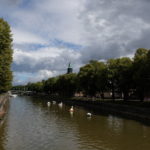
In the midst of our conversation, a couple joined us, friends of the two men. The new man’s hair was long and hers short; her tattooed arms exposed completely by her short sleeve, low cut shift displayed floral decorations. Despite the chilly, damp winds, which kept us huddled in our rain jackets, she sat comfortably at the table for a couple of hours. To make ourselves warmer, we needed a Finnish concoction called jaloviina, a cut brandy mixing various degrees of cognac and straight grain alcohol. She just sipped wine.
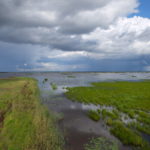
That day’s weather was typical of our experience in Finland. Slate grey clouds swoop in, blown-up blustery thunderclouds billow upwards – winds kick up and you run for your jacket; then clouds slip by and the low sun comes back, radiating heat and humidity like a sauna.
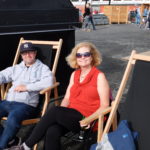
So it’s not surprising that the Finns hurry to expose themselves to the summer sun when it is out, heading to the outdoors for all manner of activities. And the sunshine lasts a long time during the summer. However, as the Finns know, soon the cold and dark will come, a hard fact of nature here. That’s why mating and calving happens fast in the wild; the flowers seem to bloom everywhere at once – spring buds yielding to summer bloom, just before the mushrooms herald the fall. Barley fields shoot up fast in the last spring, and are harvested by August.
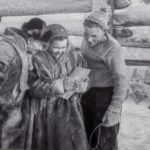
At Inari, just above the Arctic Circle, the local Sami people experience 40 days of nearly complete dark during the winter (compensated by nearly 40 days of complete light in the summer). The average low temperature turns negative to -17C (near 0 F). In the south, the daylight slips by oh so quickly in a relatively balmy low of -5 to -10C until spring comes again. Up to ten thousand years ago, in the last ice age, glaciers had ponderously covered the whole Scandinavian peninsula.
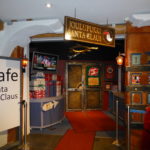
That was geologically so recent that the Kvarken Archipelago at Vaasa is still being pushed upwards by the rebounding of the earth’s mantle, once depressed a kilometer due to the weight of the ice. But it can still feel like an ice age here when the dark and cold take hold. Not surprisingly, you can even visit the home of Santa Claus here right at the Arctic Circle.

Yet the Finns – like the tattooed woman at our table or the lightly clad woman ignoring the chill air atop the boat on our Kvarken archipelago tour – have learned to live with the cold. All homes and apartments are kept cozy with doubled or tripled casement windows – secured tightly by a standard issue latching handle. That makes rooms very, very quiet as well. Many homes and most cottages feature a wood-fired heater of some sort. Everywhere you can see split wood piled up in sheds, provisions against the long winter.

And the Finns keep active, literally running in the hot and cold, whatever the season. A Sunday marathon in Helsinki found hundreds running along an old rail track, now a bike path; on one side of an underpass the weather was dark and rainy, and on the other side sunny. Or they practice Nordic skiing, either on the snow or, after the melt, with mini-skateboards on the bike paths and roadsides. People of all ages practice Nordic walking (sauvakävely), a quick paced aerobic walking with a rhythmic swing to it and poles that have triangular stops on their ends to engage the upper body in the workout.
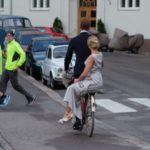
Outside town, on the fast roadways, there are plenty of men and women dressed for a Tour de Finland in biking shorts and speedy spandex. Within the outskirts of town, kids and adults take advantage of the biking paths. Every town, yes every town, has added bike paths alongside the main roads radiating from the town center. We found these paths were a reliable marker that we were entering the borders of a town, even better than the speed limit indicators which tamp drivers down from 80 to 50 kph. At the Music Festival in Oulu – a city which is a cycler’s paradise of connected islands and cycle-ways – hundreds of bikes jammed the festival entrance, outnumbering the cars.

Even the old or overweight bike around the pathways. And many elderly have started using a combination of two-handled walker atop a base of two narrow skateboards. Remarkably, they zip along, holding the handles, and pushing off with one foot in the gap between the boards.

All these vehicles are lightly secured when the owner is away. The honest Finns do not run away with anyone else’s stuff. Bikes rarely have more than a rear wheel latch as security, if that. We had our bikes stolen in Tallinn, but we saw few serious bike locks even in Helsinki. Finns proudly relate honesty stories like the tale of a wallet being lost, but soon returned by the police after the finder brought it in, as full as when it was lost. By the time we heard this story again, we expected to hear that more money was in the wallet than before it was lost.
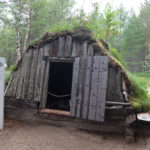
Perhaps the most engaging habit of running hot and cold is the ubiquitous Finnish sauna. When they’re not jogging, walking or boarding on the roads, the Finns are running back and forth between the heat of a sauna and the cold of a nearby stream or ocean, preferably naked. The sauna dates back to tribal people who used the hot room for cleaning, cooking, warmth and even birthing babies. Finns love their saunas – summer and winter. The country has about 1 per household, or 3 million of them – in their apartments, houses and cottages.
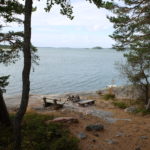
Now, most of these are modern electric saunas, where the coals are kept continually heated. The ideal temperature we’re told is 80 degrees C or higher (or 175 F), pretty much a slow roasting in an oven. Our hosts on the Turku Archipelago instructed us how to use the electric one in our cabin, by setting the time to under 4 hours and the heat setting to MAX. There is no limit to how hot the Finns want their sauna. Then we were to hustle to the edge of the bay and plunk ourselves in the 15C degree water. Which we did. Naked. Then repeat. Which we did.

At Kilopaa, we had the opportunity to try out a traditional savusauna, or smoke sauna, in a large log structure. To make it ready, owners prepared a wood fire to heat up a huge formation of stones inside. Once the room reached the right temperature, the smoke was sucked out and the room was available for use – a one-time heating process vs. the continuous heating of an electric. As the smoke sauna was intended for the large families staying at the complex, Finns and foreigners wore clothes. Yet, the room provided the typical sitting boards, something like a wooden pizza platter, for hygienic seating on the long benches. An industrious Finn kept pouring water over the coals to jack the humidity and sear our skins a bit more.
Once well roasted, sauna-goers ran outside to immerse themselves in the icy spring water adjacent to the sauna. Then they ran back to the heat of the sauna. Repeat, running from hot to cold, cold to hot. And so did we.
Note: Smoke Sauna courtesy of Math (Brendel Matyas) at hu.wikipedia. [CC BY-SA 2.5 (http://creativecommons.org/licenses/by-sa/2.5)], via Wikimedia Commons
(Also, for more pictures from Finland, CLICK HERE to view the slideshow at the end of the Finland itinerary page.)


